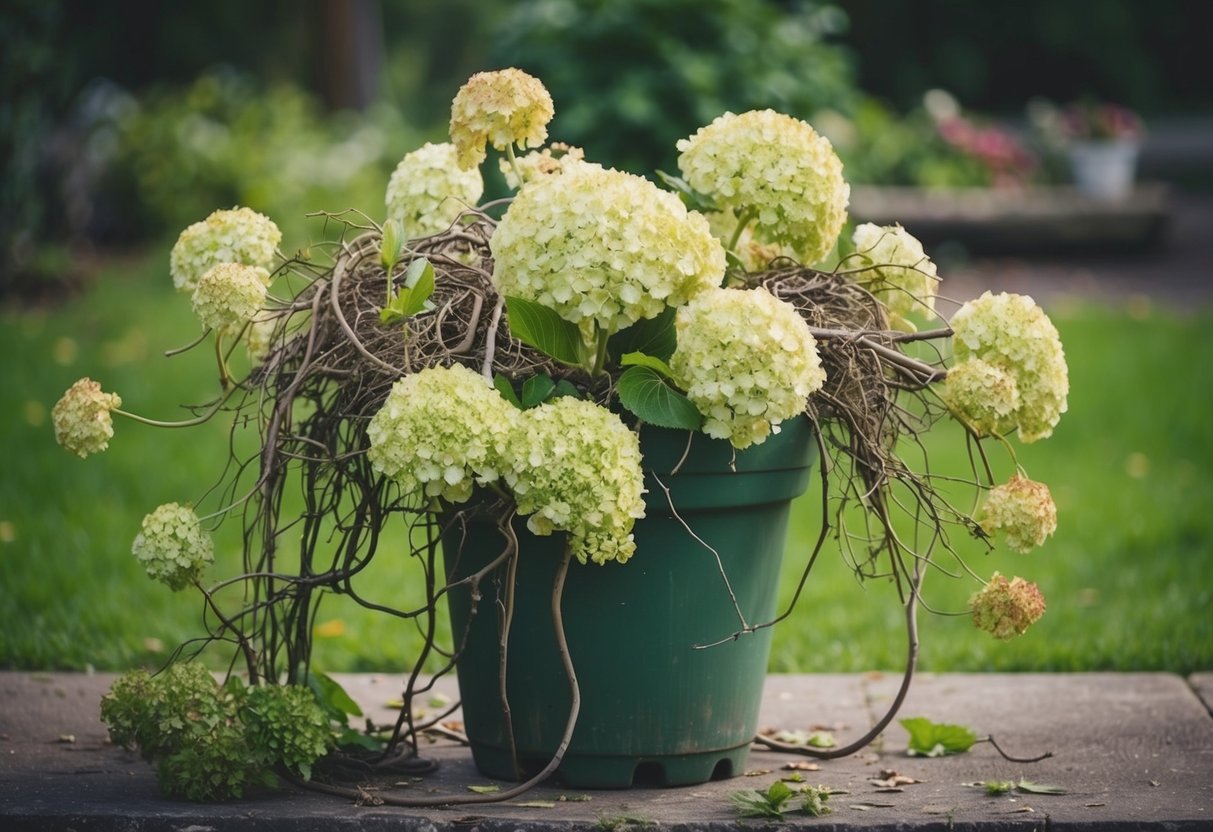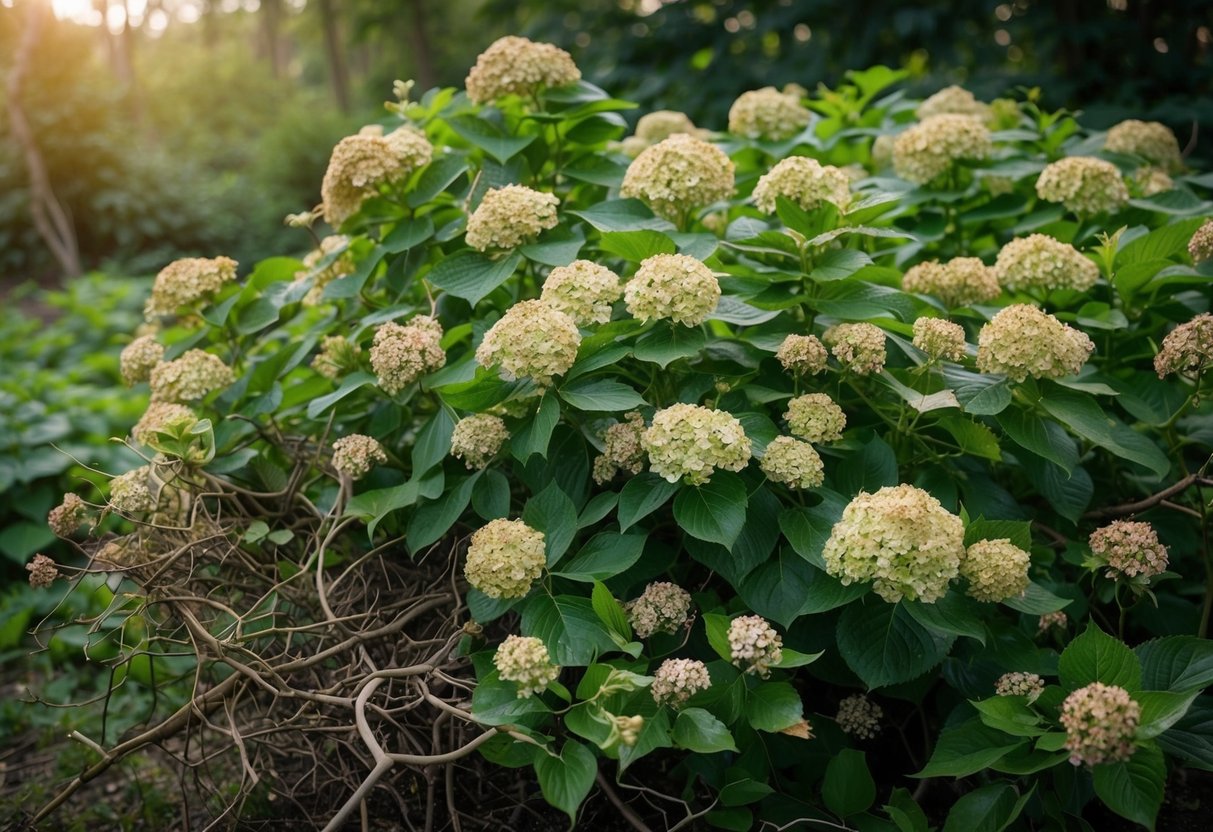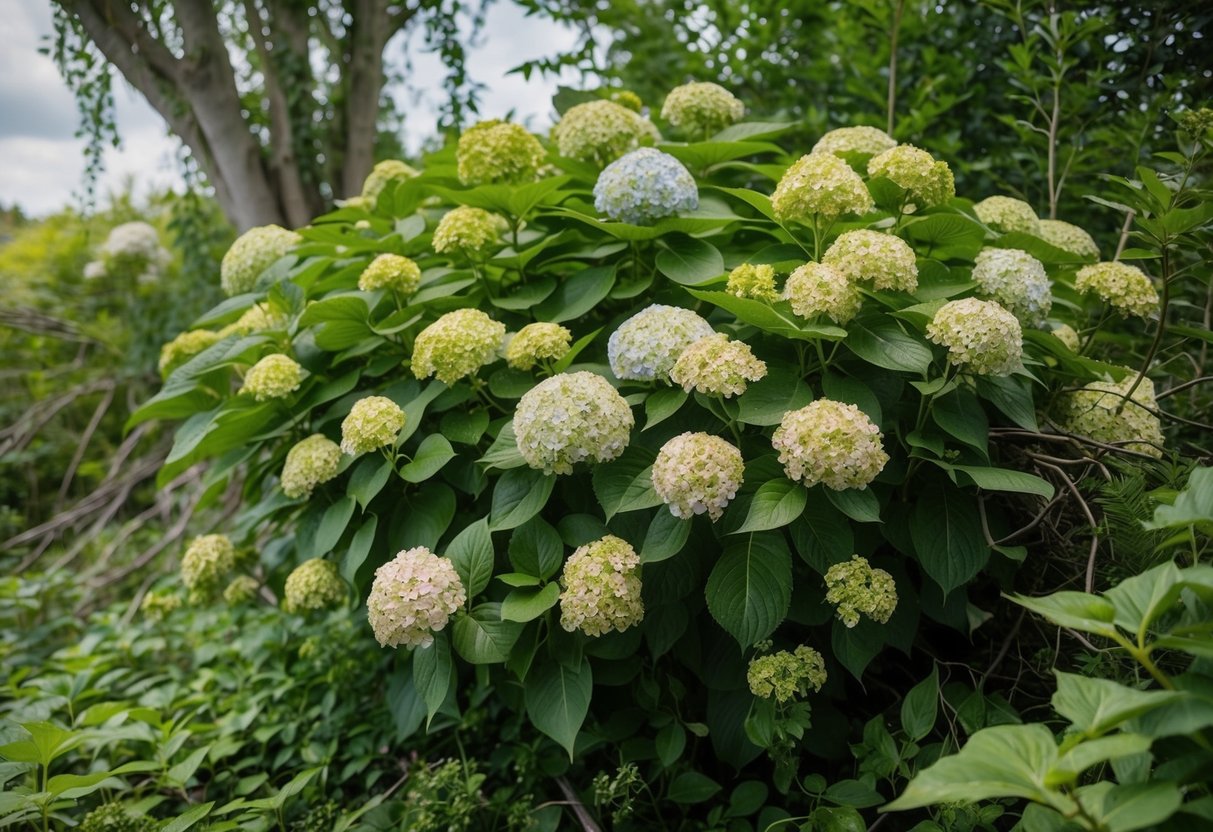What Happens If I Forget to Prune My Hydrangea? A Guide to Healthy Blooms
Have you ever wondered what might happen if you skip pruning your hydrangea? Well, your garden might look a bit wilder, but not necessarily in a bad way. If you don’t prune your hydrangea, it can still grow and bloom, but it might become less tidy over time. Some types, like panicle hydrangeas, can grow quite large if left unchecked.

When you forget to prune, your hydrangea might produce fewer blooms, and old wood can affect the plant’s shape. This is especially true for certain varieties that bloom on old wood. Trimming hydrangeas helps stimulate new growth, and you can learn more about pruning tactics from resources like Homes & Gardens.
Remember, though, that hydrangeas are forgiving plants. If you missed out on pruning, your hydrangea won’t be angry with you! To maintain a healthy appearance, focus on removing dead or damaged stems. This way, you encourage a fuller and more balanced look, as described by Get Busy Gardening.
Understanding Hydrangeas and Their Blooming Cycles

Hydrangeas are beautiful shrubs with various types that bloom differently, depending on whether they develop buds on old or new wood. Knowing the difference between these types can help you care for your hydrangeas effectively.
Identifying Hydrangea Types
There are several types of hydrangeas, each with unique characteristics. Bigleaf hydrangeas, like hydrangea macrophylla, have large leaves and often change flower color based on soil pH. Panicle hydrangeas, such as hydrangea paniculata, feature cone-shaped flower clusters.
Smooth hydrangeas (hydrangea arborescens) are known for their round flower heads. Oakleaf hydrangeas (hydrangea quercifolia) have distinctive leaves that resemble oak leaves. Lastly, climbing hydrangeas (hydrangea petiolaris) are unique for their ability to climb trellises or walls.
Recognizing these types will guide you in understanding their care needs and blooming habits.
Old Wood Versus New Wood Explained
Hydrangeas can bloom on either old wood or new wood. Old wood bloomers develop flower buds on last year’s growth. This means that if you prune them too late, you might remove next season’s flowers. Hydrangea macrophylla and certain mountain hydrangeas are typical examples.
On the other hand, new wood bloomers form buds on the current year’s growth. This makes them more forgiving with pruning times. Hydrangea paniculata and hydrangea arborescens are known new wood bloomers. Knowing whether your hydrangea blooms on old or new wood helps you plan the right pruning schedule.
Proper Techniques for Pruning Hydrangeas

Pruning hydrangeas correctly ensures healthy growth and abundant blooms. Knowing the right timing and steps for pruning can help you get the best results.
Timing Your Pruning
It’s important to prune hydrangeas at the right time to protect next season’s blooms. For bigleaf and oakleaf hydrangeas, prune right after they flower in summer. These plants bloom on old wood, so timing is key. Smooth hydrangeas, however, bloom on new wood, so you should prune them in late winter or early spring. Similarly, panicle hydrangeas should be pruned in early spring since they also bloom on new growth.
By understanding the blooming cycle, you can avoid ruining the flowering for the next season. Timing is essential, so make sure you know your plant type before you start cutting.
Step-by-Step Pruning Guide
When it’s time to prune, begin by removing any dead or damaged stems. Cut back to the base to encourage new growth. For healthier stems, trim one-third of the length to shape the plant and boost airflow.
Use sharp, clean tools to make smooth cuts, which helps prevent disease. Handle each type of hydrangea carefully; smooth cuts give bigleaf and oakleaf hydrangeas their best chance to thrive. Be gentle and patient as you work, ensuring each cut promotes future growth and flowering.
Consistent pruning will keep your hydrangeas vibrant and full of life year after year. For more information on pruning techniques, visit the Get Busy Gardening guide.
Effects of Neglecting Pruning on Hydrangea Health and Bloom

When you forget to prune your hydrangeas, it can affect both the number of blooms and the overall health of the plant. Without regular pruning, you might notice fewer flowers and a less tidy appearance.
Impact on Bloom Production
Neglecting to prune your hydrangeas may lead to a reduction in bloom production. Hydrangeas often require pruning to encourage new growth, which is where the flower heads form. If dead or old branches are not removed, the flowering shrubs might not have the energy to produce as many vibrant blossoms.
Regular pruning is also important for deadheading, which means cutting off old or spent flowers. Without deadheading, the plant may focus energy on seed production rather than creating new blooms.
Risks to Overall Plant Health
Your hydrangea can become overgrown and unruly if not pruned regularly. This can result in a messy appearance and might even affect the plant’s ability to grow strong branches capable of supporting large blooms.
Overgrown hydrangeas can also develop issues like poor air circulation. This can lead to mold and other diseases, which can further harm the plant. Ensuring cuts are made with clean, sharp tools can protect against potential infections and keep your plant thriving and healthy.
Deadheading and Maintenance Between Pruning Sessions

Taking care of your hydrangeas involves regular deadheading and maintenance. This practice ensures your garden remains vibrant and tidy. By removing spent blooms, you help the plant conserve energy for new growth and keep it looking its best.
The Role of Deadheading in Hydrangea Care
Deadheading hydrangeas involves removing the spent flower heads from the plant. This task is important because when you cut off the wilted blooms, the plant can focus on new growth instead of wasting resources on produce seeds. This helps extend the blooming period.
Deadheading also keeps your garden neat. You usually take off the faded bloom just above the first set of healthy leaves. By doing this, you help the plant enter dormancy gracefully, preparing it for future growth.
Not all hydrangea types require deadheading, so knowing the specific needs of your hydrangea variety is important. Always use clean, sharp scissors or pruners to prevent damage or disease.
Maintaining Aesthetic Appeal
Maintaining the aesthetic appeal of your hydrangeas goes beyond just deadheading. Trimming back straggly stems and removing dead or damaged leaves can make a big difference.
Consider your garden ideas when maintaining your plants. Place them in spots where they get the right amount of sun and water. Healthy stems and the right environment are key to achieving lush blooms year after year.
Regularly check your plants for signs of pests or disease. Treat any issues promptly to avoid bigger problems. By combining all these efforts, you ensure your hydrangeas remain a focal point in your garden.
Adjusting Your Hydrangea Care Throughout the Seasons

To ensure vibrant blooms and healthy growth, it’s important to adapt your hydrangea care to the changing seasons. Each season has specific requirements, from protecting them during their dormant phase to encouraging lush flowers.
Winter Care and Dormancy
During winter, your hydrangeas enter a period of dormancy. This is an essential time for conserving energy and preparing for the next growth cycle.
Start by adding a thick layer of mulch around the base to retain warmth and moisture. Use a 6-12 inch layer of mulch to protect the roots and keep the soil insulated.
It’s also a good idea to lightly water your hydrangeas if the winter is particularly dry. Make sure any water you apply does not freeze, as this can damage the plant.
Avoid pruning during this time, as you may remove important flower buds that form in the coming months. Focus on maintaining soil quality and moisture levels, especially if your soil is more alkaline, as this could impact future blooms negatively.
Spring Awakening and Summer Blooms
As spring arrives, your hydrangeas will begin to wake from dormancy. This is the best time to prune your plant if needed. Make sure you only remove deadwood and not any new growth, as the latter will develop into flowers. A bit of light fertilizer can support vibrant summer blooms. It will give your hydrangeas the nutrients they need for flower buds.
Regular watering becomes crucial during this time. Hydrangeas generally need about an inch of water each week. Avoid overwatering, which can lead to root rot. Keep an eye on your soil; hydrangeas prefer mildly acidic to neutral conditions. Adjust pH levels if necessary to ensure lush blooms throughout summer.







